History of the business
Robot
As a leading manufacturer, we have contributed to the development of the industry, both in Japan and abroad. We do this for the automotive and electric/electronic industries, as well as various other industries, by providing robots for various purposes, such as spot welding, arc welding, assembling, handling, painting, and palletizing. We’ve utilize the achievements and system engineering technology we have accumulated as a pioneer in industrial robots to expand into new fields, such as collaborative robots that work with humans and medical robots. We have sent various kinds of robots into the world to address social issues such as labor shortages.
-
1968/ Showa 43
Start of Robot Division
Kawasaki Aircraft Co., Ltd. entered into a technical tie-up agreement with Unimation from the United States in regard to the industrial robot Unimate.
-
1969/ Showa 44
Merger of three Kawasaki companies
Kawasaki Heavy Industries, Kawasaki Aircraft, and Kawasaki Rolling Stock Manufacturing were merged and newly launched as Kawasaki Heavy Industries, Ltd.
The goal of this was to expand the scale of the company, consolidate capital, and make comprehensive use of human resources, technological capabilities, and facilities. -
1969/ Showa 44
Commercial production starts on the Kawasaki-Unimate 2000, the first Japanese-made industrial robot
We completed Japan’s first domestically produced industrial robot, the Kawasaki-Unimate 2000, becoming the pioneer in developing the Japanese robot industry.
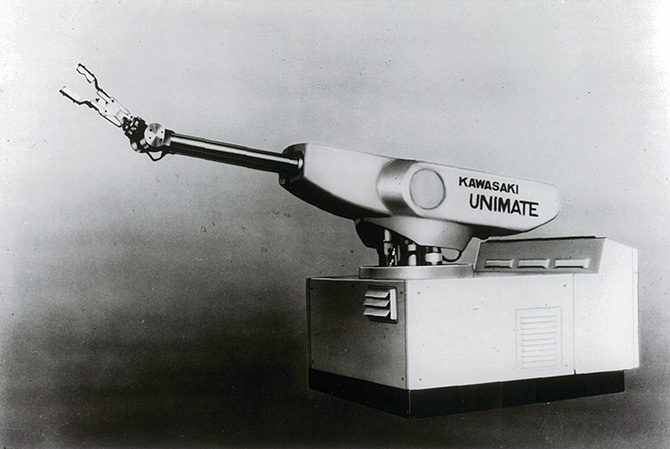
Kawasaki-Unimate 2000
-
1981/ Showa 56
Starting production of electric robot (PUMA)
Due to industrial robots making a rapid transition from being hydraulic to electric, we started domestic production of the small-size electric vertically articulated robot, PUMA.
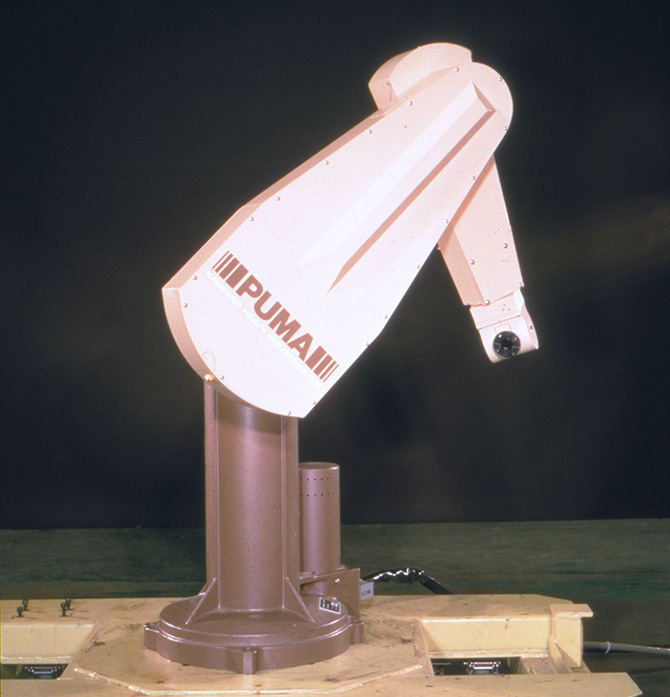
PUMA
-
1982/ Showa 57
Starting development of large-size electric robot (E series)
We put the EA65, which has a payload of 65 kg, and the EA100, which has a payload of 100 kg, on the market in 1983.
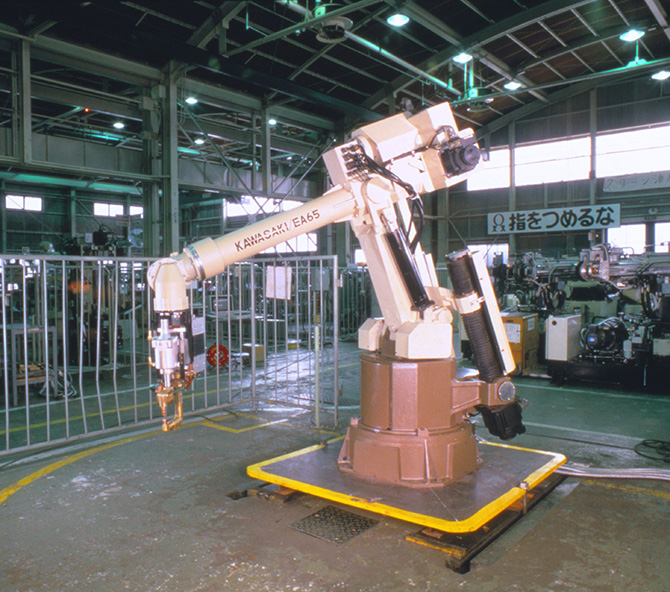
EA65 electric robot
-
1986/ Showa 61
Terminating the partnership with Unimation, and starting in-house development and global rollout
Utilizing the technology we had accumulated up until that point, we decided to develop our own unique robots. We used this opportunity to rename the “Kawasaki-Unimate” as “Kawasaki Hydraulic Robot,” and “PUMA” as “P series”
-
1989/ Heisei 1
Launch of small-to-medium general-purpose robot (J series)
We put the Js-10, which had an assembling and handling payload of 10 kg, on the market in 1989.
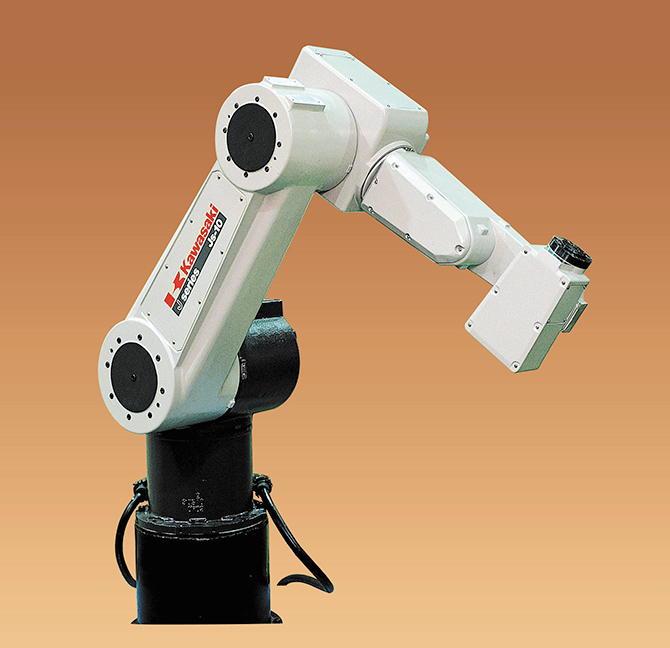
Small-to-medium general-purpose robot
(J series) -
1990/ Heisei 2
Establishment of Kawasaki Robotics (USA), Inc., a subsidiary based in Detroit, United States
We established an overseas subsidiary in the United States, and strengthened our sales activities while developing our training and after-sales service systems.
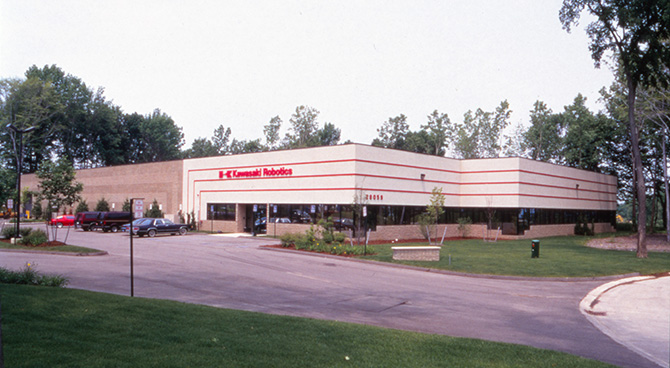
KRI
-
1992/ Heisei 4
Launch of large general-purpose robot (U series)
Launch of all-digital controller (AD series)We started selling the new model U series, which was a large-size robot with improved functionality. We also started selling the AD series controller, which was equipped with a 32-bit microcomputer and incorporated the latest robot control technologies, such as the new robot language, “AS.”
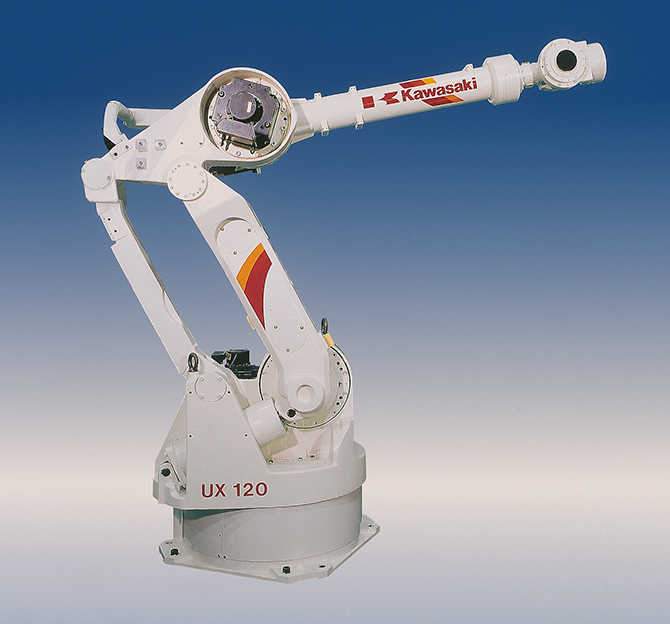
Large general-purpose robot
(U series) -
1995/ Heisei 7
Establishment of Kawasaki Robotics GmbH, a subsidiary based in Neuss, Germany
We established a sales and service base in Germany with the aim of market development in the entire Europe region.
-
1996/ Heisei 8
Establishment of Kawasaki Robotics (UK), Ltd., a subsidiary based in the United Kingdom
We made a full-scale expansion of our European sales and service activities.
-
1997/ Heisei 9
Launch of all-digital controller (C series)
Making a full-scale entry into the clean robot business
With the growing demand for semiconductors and LCDs, we developed the TS series, a telescopic, vertically lifting, horizontally articulated wafer transfer robot, making a full-scale entry into the clean robot market.
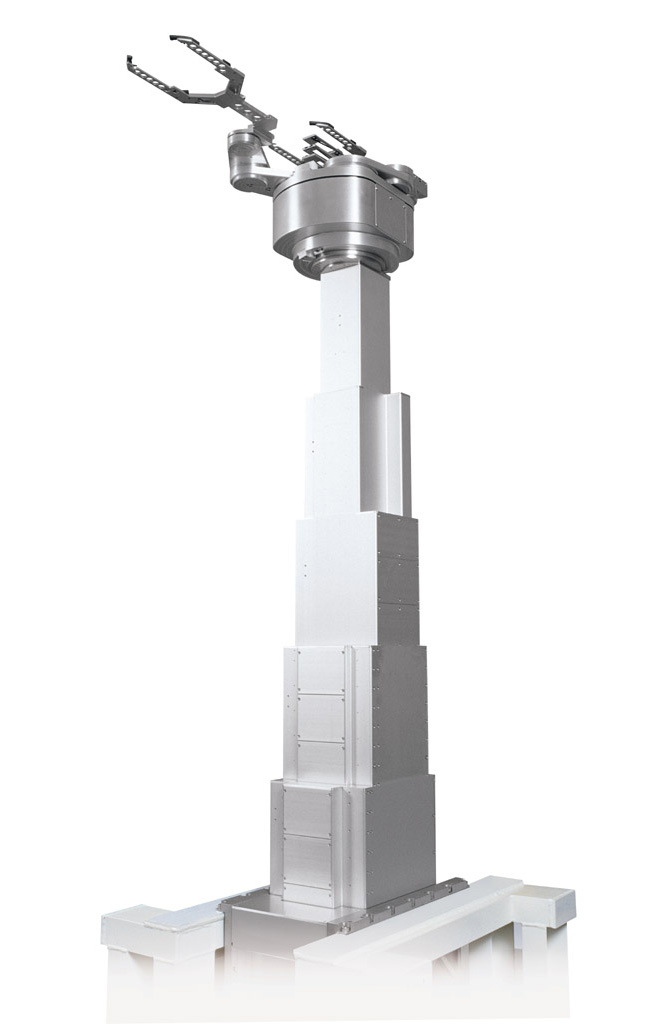
TS series wafer transfer robot
-
1998/ Heisei 10
Launch of small-to-medium general-purpose robot (F series)
The F series is a small-to-medium articulated robot with a payload capacity from about 2 kg to 80 kg. It has a wide range of applications and is used in many industries.
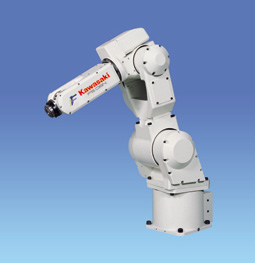
Small-to-medium general-purpose robot
(F series) -
1999/ Heisei 11
Establishment of Kawasaki Machine Systems Korea, Ltd., a subsidiary based in Incheon, South Korea
Launch of large general-purpose robot (Z series)
The Z series entered the market as the successor to the U series that came before it. It had a unique hybrid link structure and featured the largest operational range in its class, with back handspring capability and high-speed performance.
It is used by many automobile manufacturers for spot welding.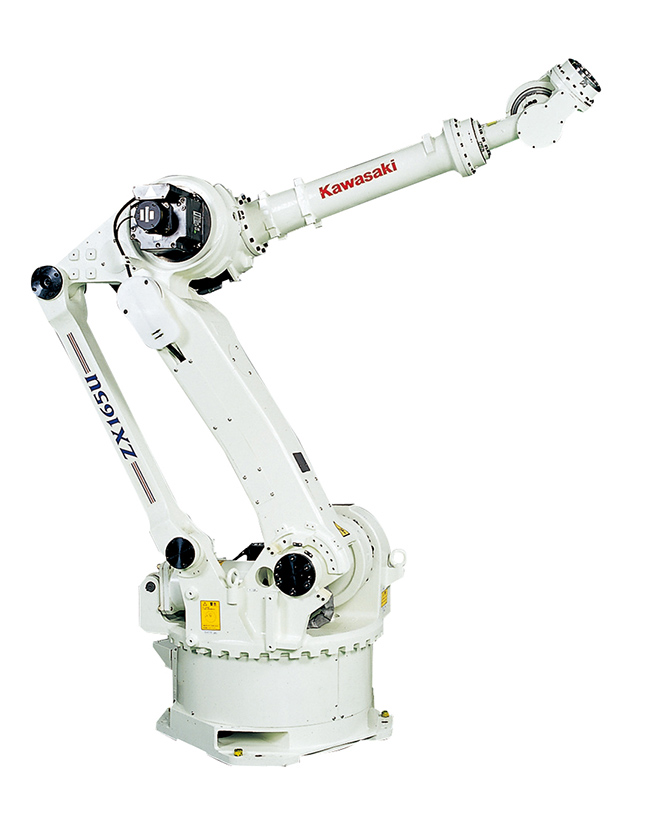
Large general-purpose robot
(Z series) -
2000/ Heisei 12
Inheriting the paint robot business from Kobe Steel, Ltd.
We inherited Kobe Steel, Ltd’s high technical skill and know-how, and greatly expanded our paint robot business.
-
2000/ Heisei 12
Launch of horizontal articulated type clean robot (NS series)
The NS series is a type of clean robot developed for transporting increasingly larger wafers and LCD glass for manufacturers of semiconductor manufacturing equipment.
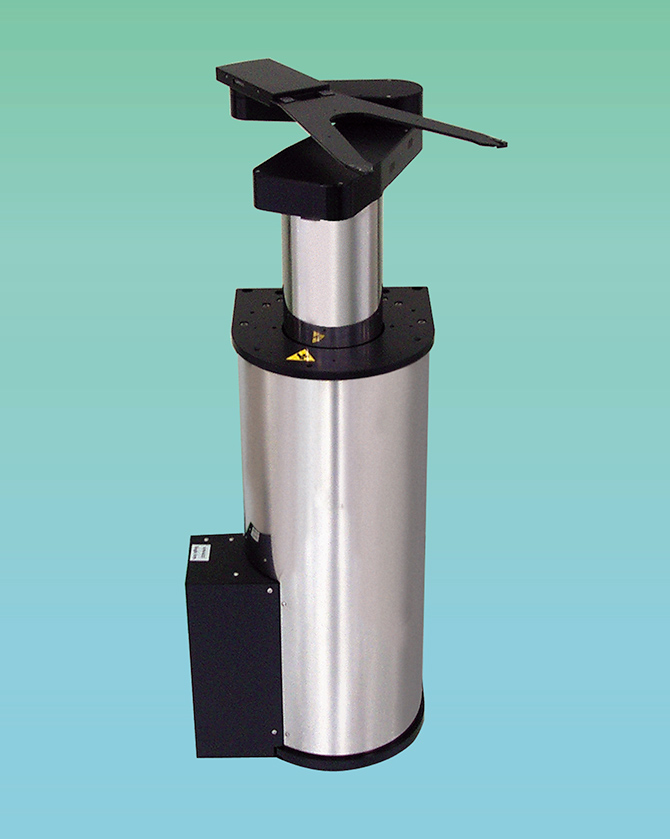
Horizontal articulated type clean robot
(NS series) -
2002/ Heisei 14
Launch of painting robot (K series)
We started selling the K series explosion-proof painting robots that were developed using the consolidated know-how of Kawasaki and Kobe Steel, Ltd.
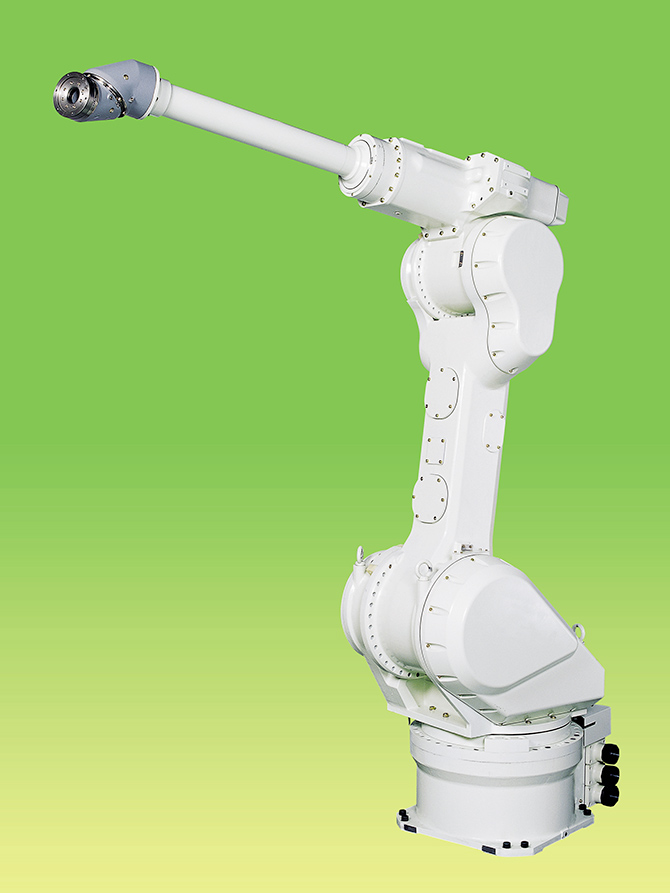
Painting robot
(K series) -
2002/ Heisei 14
Launch of heavy-payload general-purpose robot (M series)
The M series was widely expanded for automating equipment in heavy load transportation applications in the automotive, general industrial machinery, and aerospace industries.
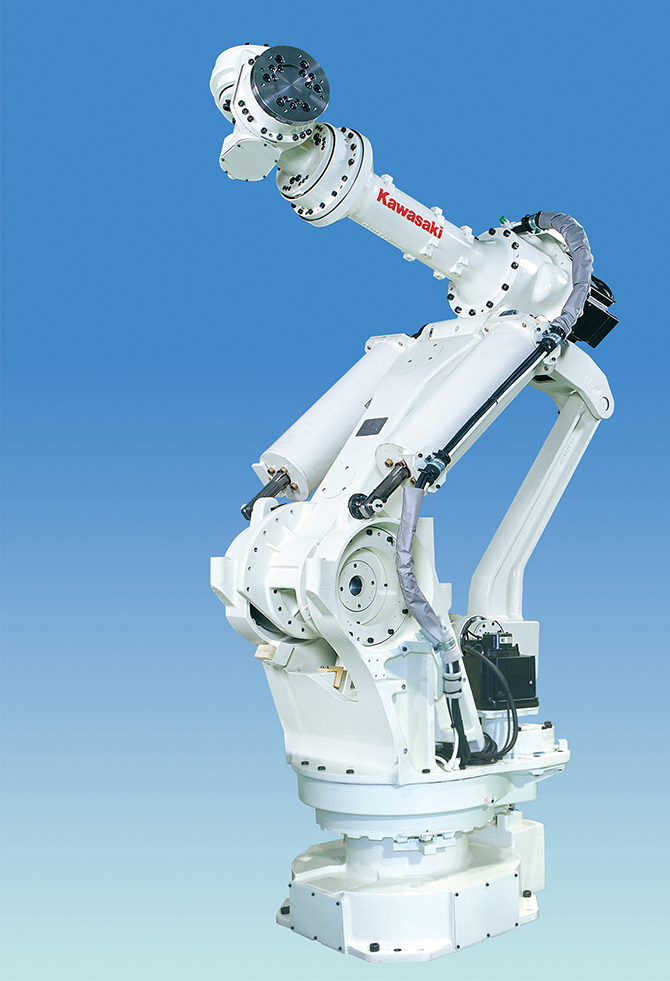
Heavy-payload general-purpose robot
(M series) -
2002/ Heisei 14
Launch of robot controller (D series)
With the key focus on providing comfort to customers, we launched the D series controller, which retained the superior performance of the C series that came before it while greatly improving processing power, operability, maintainability, and system expandability.
-
2003/ Heisei 15
Launch of horizontal articulated type clean robot (NX series)
The NX series utilizes the features of the NS series clean robots and added a horizontal rotation axis at the wrist, allowing movement to two and three FOUPs (cassettes containing wafers) without using a traveling device.
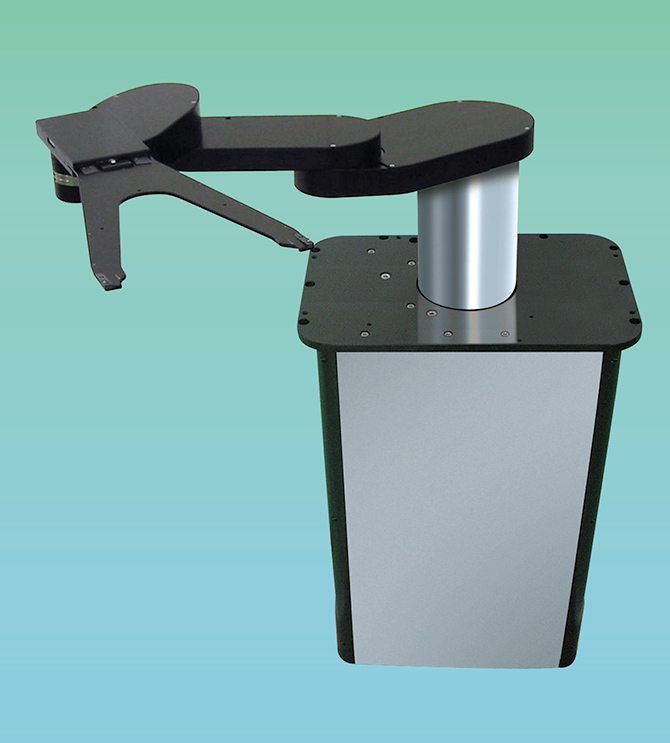
Horizontal articulated type clean robot
(NX-series) -
2004/ Heisei 16
Development and launch of new Friction Spot Joining (FSJ) technology
We developed the Friction Spot Joining (FSJ) system, which solved the cost and maintenance issues of previous spot welding.
-
2006/ Heisei 18
Establishment of Kawasaki Robotics (Tianjin), Co., Ltd., a subsidiary based in Tianjin, China
We started selling and servicing robots for Chinese factories of major Japanese automotive manufacturers, with the subsidiary as our first site in China.
-
2007/ Heisei 19
Launch of horizontal articulated type clean robot (NT-series)
The NT series further improved upon the NS and NX series. These improvements included increased wafer transfer speed through extended arm length and enhanced positioning accuracy by improving the placement of gearboxes at the joints and increasing rigidity. These improvements contributed to the enhancement of the processing capabilities of semiconductor manufacturing equipment.
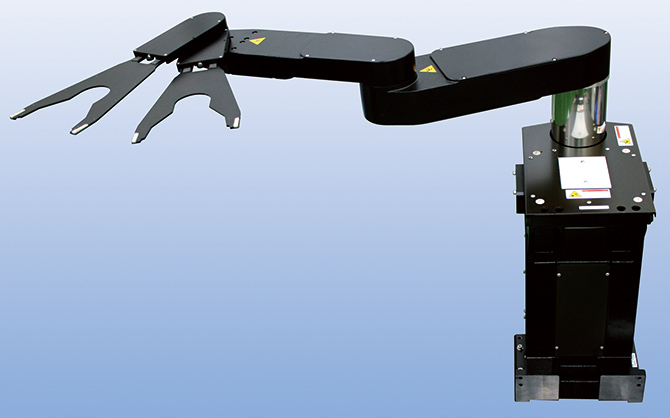
Horizontal articulated type clean robot
(NT series) -
2008/ Heisei 20
Launch of small-to-medium general-purpose robot (R series)
Launch of high-performance controller (E series)
The R series further improved upon the superior performance of its predecessor, the F series. The R series had increased speed, improved wrist load capability, and an expanded range of movement.
The E series was a newly designed compact controller based on customer feedback. It massively improved the execution of various applications and achieved comfortable operability.
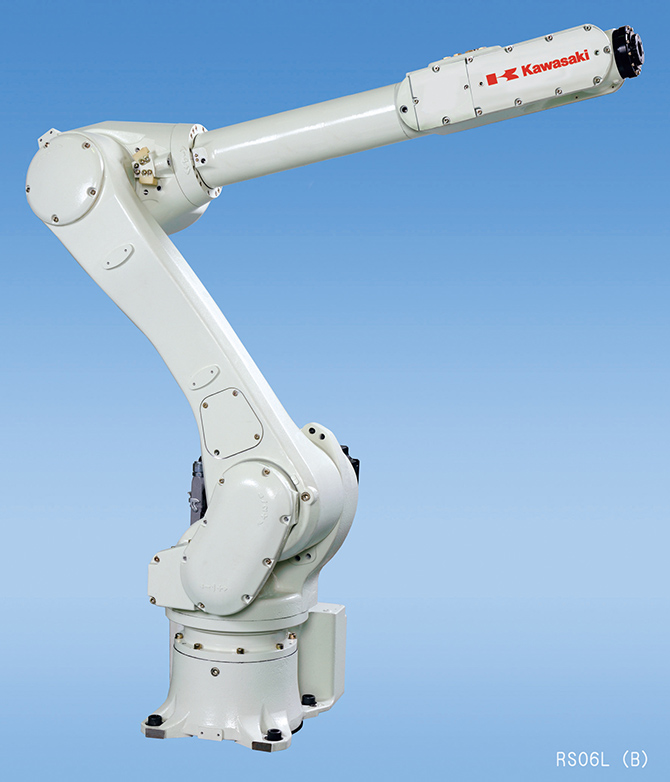
Small-to-medium general-purpose robot
(R series) -
2009/ Heisei 21
Launch of picking robot, picKstar (Y series)
It was our company’s first delta-type parallel link robot and can rapidly perform pick and place tasks in a wide range of fields that involved electronic items or small items, such as food, medical products, and cosmetics.
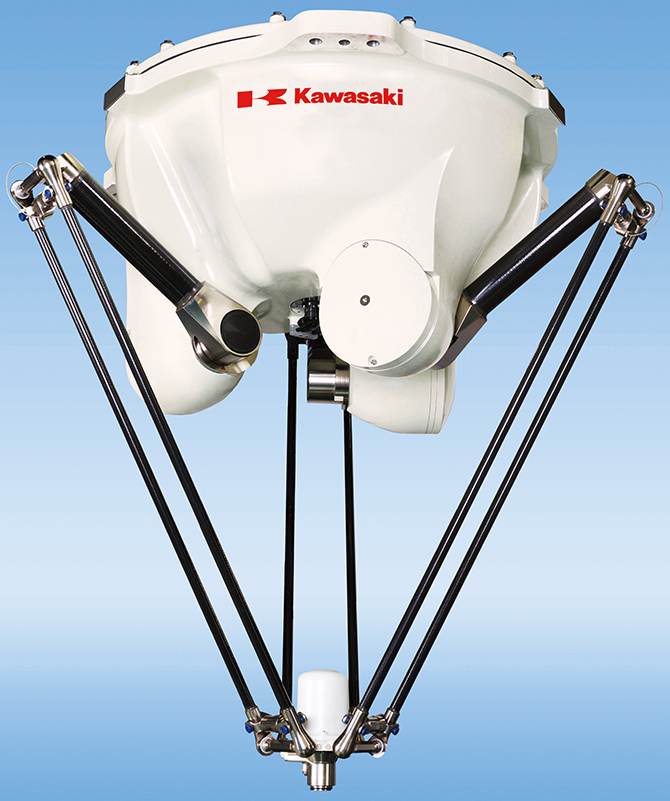
Picking robot, picKstar
(Y series) -
2011/ Heisei 23
Launch of spot welding robot (BX series)
The BX series further improved upon the superior performance of the large, general purpose Z series robots that came before them. It is a vertically articulated robot that had optimized the spot welding of automobile bodies and parts.
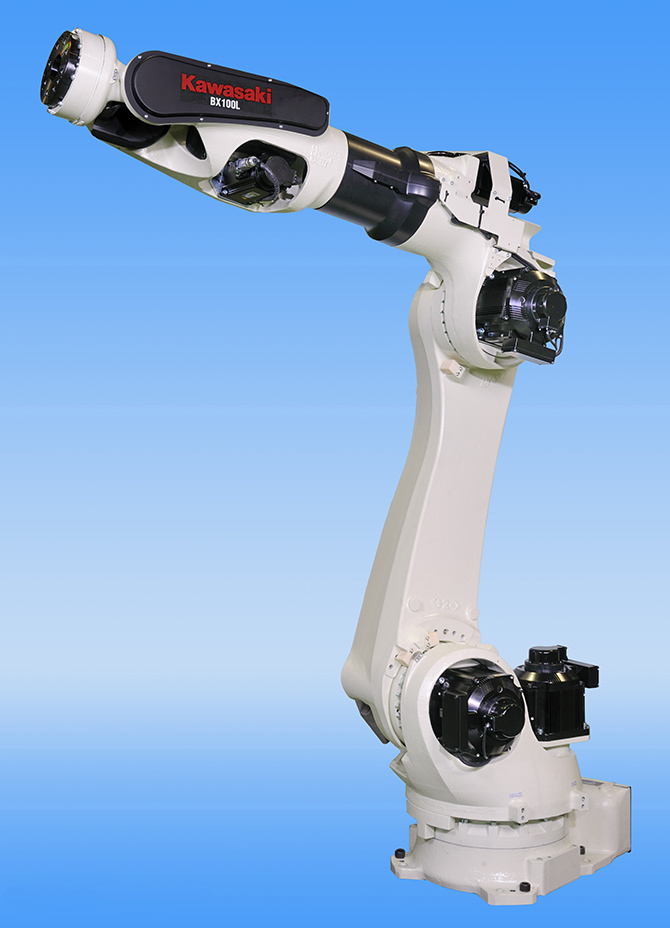
Spot welding robot
(BX-series) -
2013/ Heisei 25
Establishment of Medicaroid Corporation
Medicaroid was established as a joint venture with Sysmex Corporation, with its wide medical network, with the purpose of expanding the use of robots in medical fields.
-
2013/ Heisei 25
Launch of medical and pharmaceutical robot (MC004N and MS005N)
In pharmaceutical and medical production lines, there was a growing demand for robotic automation to eliminate human error and exposure risks from handling highly pharmacologically active drugs, such as anticancer agents. The MC004N and MS005N were our first medical and pharmaceutical robots.
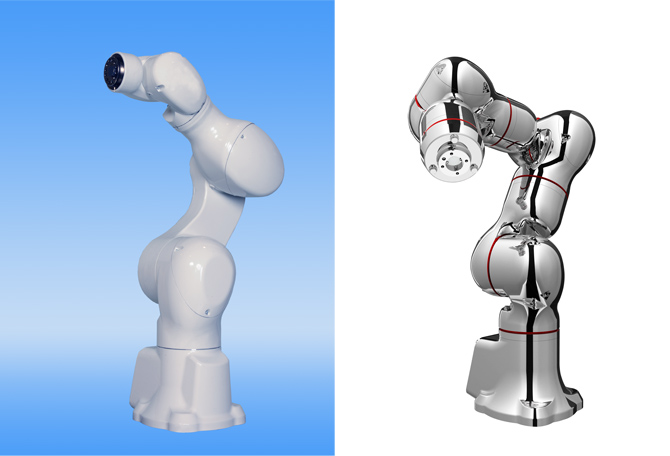
Medical and pharmaceutical robots
(MC004N and MS005N)-1Medical and pharmaceutical robots
(MC004N and MS005N)-2 -
2015/ Heisei 27
Launch of the MG10HL extra-heavy payload robot
The MG10HL has a payload of one ton, and is a robot in the M series, which are used in the automotive, general industrial machinery, and aerospace industries for equipment automation in heavy-load transportation applications.
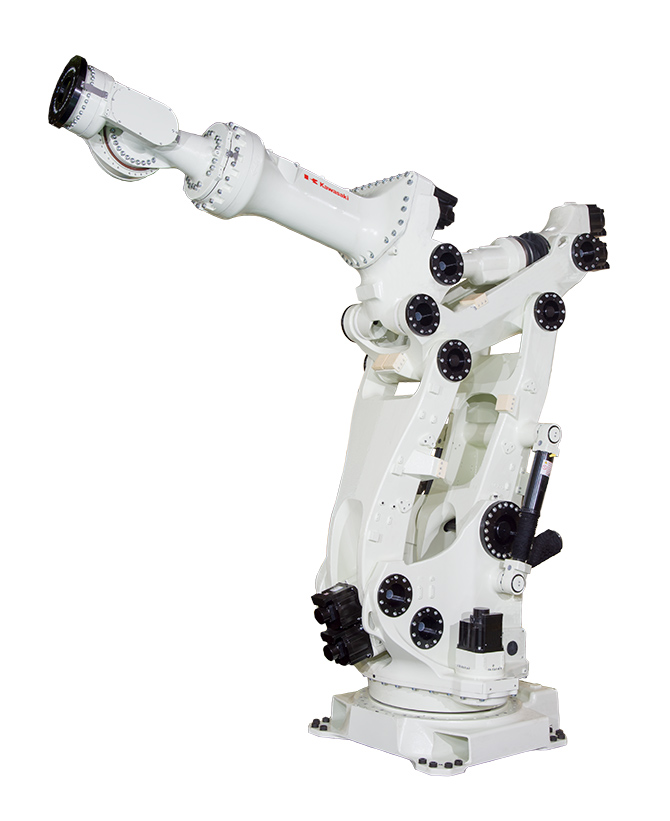
MG10HL extra-heavy payload robot
-
2015/ Heisei 27
Launch of dual-arm SCARA collaborative robot, duaAro
The duAro is a dual-arm SCARA robot that can do collaborative work in the same space as people.
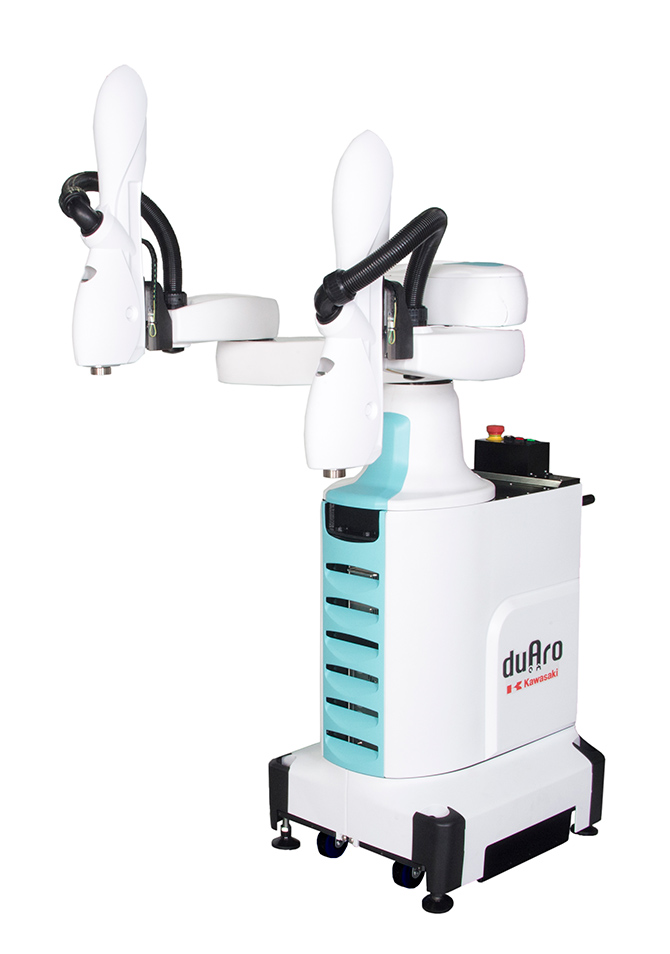
Dual-arm SCARA collaborative robot, duaAro
-
2017/ Heisei 29
Launch of small-sized high-speed robots, RS007N and RS007L
In addition to the industries that have introduced robots in the past, we saw a growing need for small robots in other industries, especially in the electrical, electronic, and food industries. We launched two robots in response, the RS007N and RS007L, which are six-axis vertically articulated robots with a maximum payload capacity of 7 kg.
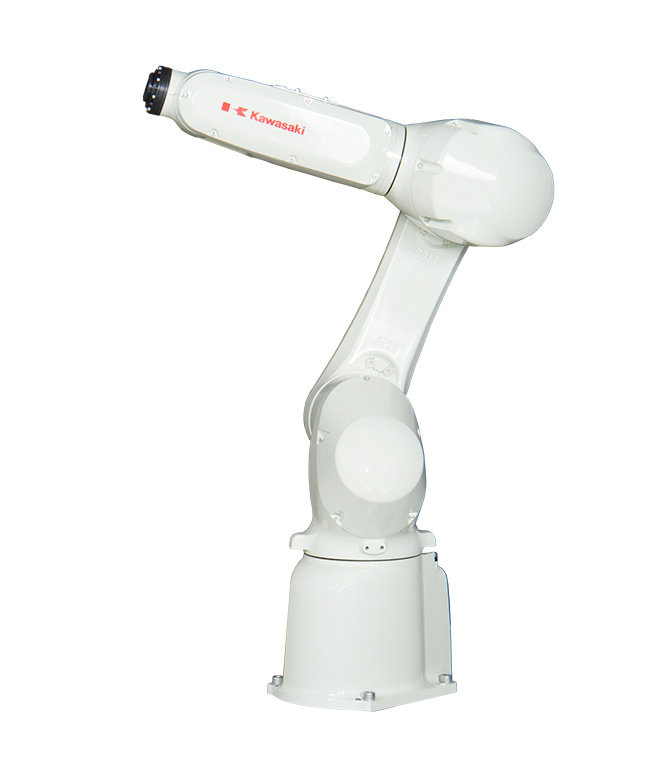
Small-sized high-speed robots, RS007N and RS007L
-
2017/ Heisei 29
Announcement of new remote-controlled robot system, Successor
The Successor is a new robot system that reproduced the movements of expert engineers through remote collaboration. It can also be used to transfer skills from experts to amateurs through the robot. It was also expected to act as a substitute and improve efficiency in working conditions that are demanding, dirty, and dangerous.
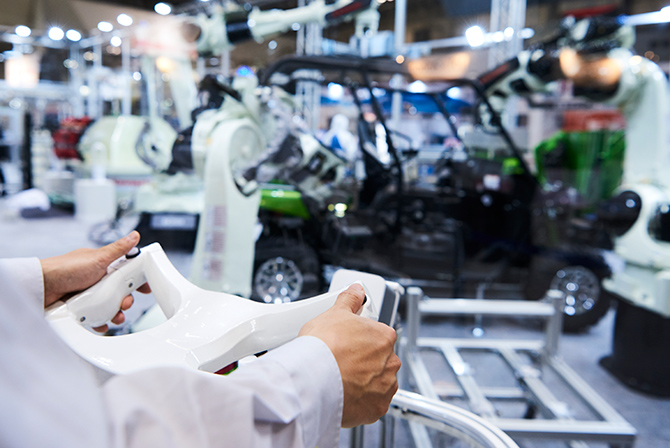

Successor
-
2017/ Heisei 29
Debut of Kaleido humanoid robot at the International Robot Exhibition
Kaleido is 178 cm tall, weighs 85 kg, and has the strength and robustness to benchpress 50–60 kg (at the time). It can perform basic human movements such as walking, as well as recognizing, grasping, and carrying objects.
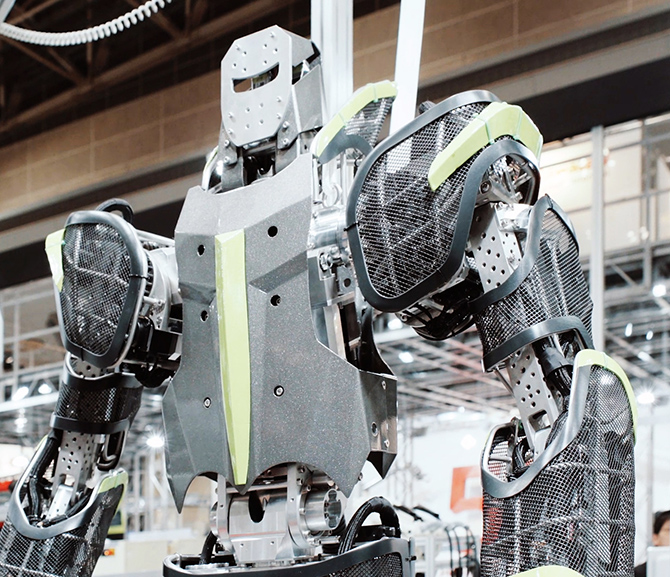
Humanoid robot “Kaleido”
-
2018/ Heisei 30
50th anniversary of Robot Division
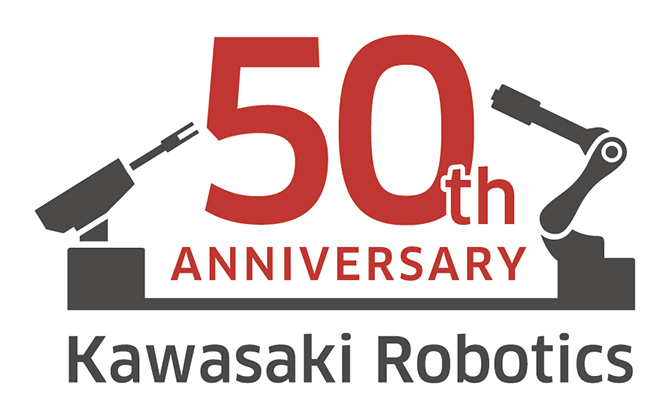
THE STORY OF KAWASAKI ROBOT
-
2020/ Reiwa 2
Medicaroid Corporation announces that it has obtained manufacturing and marketing approval for the hinotori™ Surgical Robot System
We have been primarily responsible for the development of the robot. Our technology cultivated in industrial robots is being used in many areas.
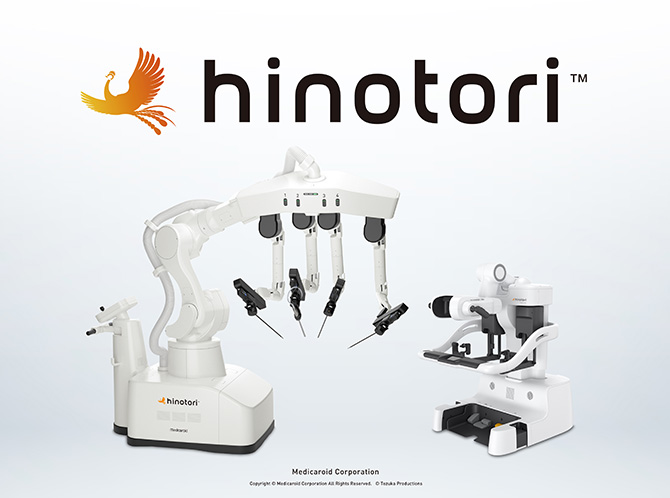
hinotori™ Surgical Robot System
(Medicaroid Corporation) -
2021/ Reiwa 3
Installation of Japan’s first automated robotic PCR testing system at Kansai International Airport
We have contributed to addressing the global COVID-19 issue by developing automated PCR testing system using robots.
-
2021/ Reiwa 3
Establishment of Remote Robotics Inc.
Together with the Sony Group, we established Remote Robotics Inc., a new remote robot platform business. The new company established a remote robot platform that enabled the operation of robots from remote locations. It primarily provides robot software and solution services and began providing services in specific industrial fields, such as manufacturing and processing.
-
2022/ Reiwa 4
Conducting proof of concept testing with social robots at Fujita Health University Hospital
By utilizing robots in medical settings, we aimed to alleviate the burden on medical professionals, streamline operations, and maximize the time spent with patients and doing specialized tasks, creating an environment that enables the sustainable provision of higher-quality healthcare.
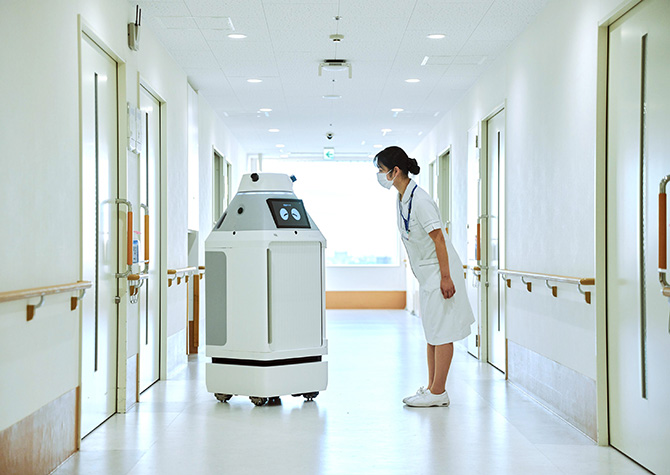
FORRO indoor delivery robot
-
2022/ Reiwa 4
New release of the Vambo, a mixed cargo devanning robot for the logistics sector
The Vambo is a combination of a medium-sized general-purpose robot and an automatic guided vehicle. It is used to automate the unloading of variously sized heavy-load cases from inside containers. It is expected to be successful in the logistics sector, where automation needs have been rising due to labor shortages and other factors.
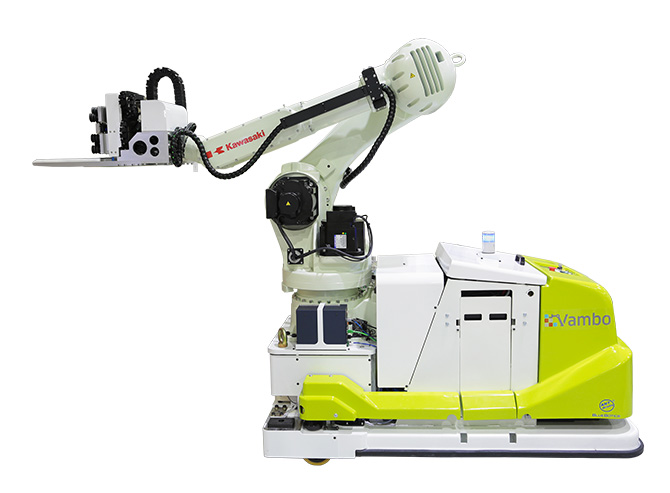
Vambo devanning robot
-
2022/ Reiwa 4
New release of the TRanbo-7 self-propelled robot
The TRanbo-7 combines a small-sized general purpose robot and driving parts that we developed in-house. It utilizes its slim body to excel in transportation tasks between other processes on manufacturing sites, such as setting up (loading and unloading) processed products and parts on equipment, and picking up parts from storage shelves.
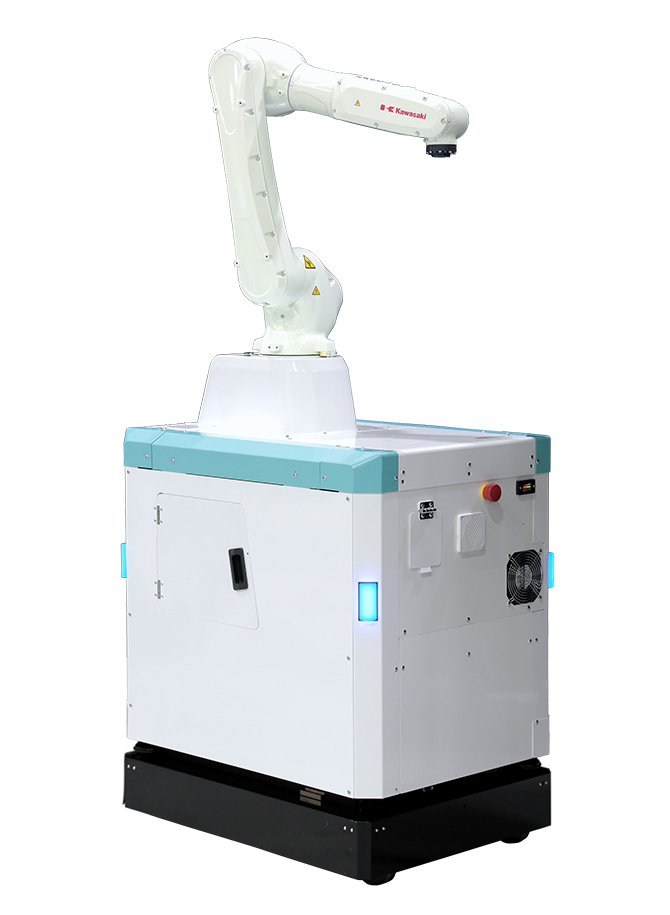
The TRanbo-7 self-propelled robot